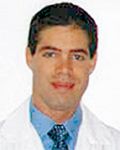- Case-Based Roundtable
- General Dermatology
- Eczema
- Chronic Hand Eczema
- Alopecia
- Aesthetics
- Vitiligo
- COVID-19
- Actinic Keratosis
- Precision Medicine and Biologics
- Rare Disease
- Wound Care
- Rosacea
- Psoriasis
- Psoriatic Arthritis
- Atopic Dermatitis
- Melasma
- NP and PA
- Skin Cancer
- Hidradenitis Suppurativa
- Drug Watch
- Pigmentary Disorders
- Acne
- Pediatric Dermatology
- Practice Management
- Prurigo Nodularis
- Buy-and-Bill
Article
Economics focus of topical acne treatment comparison
National report — Among topical medications for treating mild-to-moderate acne, antibiotics are the most cost-effective therapy for inflammatory acne while retinoids are the most cost-effective for clearing non-inflammatory lesions, according to the results of a pharmacoeconomic evaluation reported by Stefan Weiss, M.D., at the 63rd Annual Meeting of the American Academy of Dermatology.

"As novel compounds for the treatment of acne continue to enter the market, and in a health care environment where cost of therapy is a prominent concern, it is important that we as physicians take note of the efficacy of the medications we prescribe relative to their cost," he says.
Dr. Weiss is a resident in the department of dermatology at Stanford University School of Medicine, Palo Alto, Calif. Alexa B. Kimball, M.D., M.P.H., was his senior collaborator in this project. Dr. Kimball was previously assistant professor of dermatology and director, Clinical Trials Unit, Stanford University. Currently, she is director, Dermatology Clinical Studies Unit, Massachusetts General and Brigham and Women's Hospitals, Boston.
"When performing pharmacoeconomic analyses, it is often important to consider both direct and indirect costs. For example, evaluations of cost-effectiveness of psoriasis therapies might take into account such variables as fees for unscheduled physician visits, laboratory tests used for safety monitoring, and loss of productivity due to time off from work. Those costs are minimal for acne patients using topical therapy, and so we chose to limit our analyses to the cost of therapy itself," Dr. Weiss explains.
The medications included in the analysis were benzoyl peroxide 5 percent/clindamycin 1 percent gel (Benzaclin, Dermik), benzoyl peroxide 5 percent/erythromycin 3 percent (Benzamycin, Dermik), clindamycin gel 1 percent (Clindagel, Galderma), adapalene cream 0.1 percent (Differin, Galderma), tretinoin gel 0.025 percent (Avita, Penederm), tretinoin microsphere (Retin-A Micro, OrthoNeutrogena) 0.01 and 0.04 percent, and tazarotene 0.1 percent (Tazorac, Allergan) gel and cream.
The efficacy results were derived from the package insert for each product. The cost of each treatment was based on an Internet pharmaceutical supplier's price for the brand-name product and assumed application of 1 g per day over a 12-week treatment period.
Across all of the products, the cost for a 12-week course of therapy ranged from a low of about $100 for benzoyl peroxide/erythromycin pack and clindamycin gel to a high of about $250 for both tazarotene formulations. The costs for the remaining medications ranged between $135 and $175.
Despite the variance in prices, over the 12-week period of study, the cost to achieve a single unit of reduction in acne lesion count was generally similar across all therapies.
Most cost-effective Overall, however, the combination of benzoyl peroxide/erythromycin was the most cost-effective treatment for reducing total lesion count ($239.92/clearance). Topical antibiotic therapy was the most cost-effective for treating inflammatory acne, and within that category, clindamycin gel had the best cost-effectiveness ratio ($205.33/clearance). Retinoid therapy was the most cost-effective for reducing non-inflammatory lesion counts with tretinoin gel microsphere 0.1 percent being the most cost-effective ($323.57/clearance) within that category.
"That inflammatory acne was better treated with a topical antibiotic and non-inflammatory acne by topical retinoids was consistent with common practice patterns in which combination treatment is usually prescribed for optimal acne management," Dr. Weiss says.
Violations Commenting further about the study methods, Dr. Weiss notes that comparing the various acne products based on the efficacy achieved in their pivotal trials violates a fundamental rule of clinical research.





